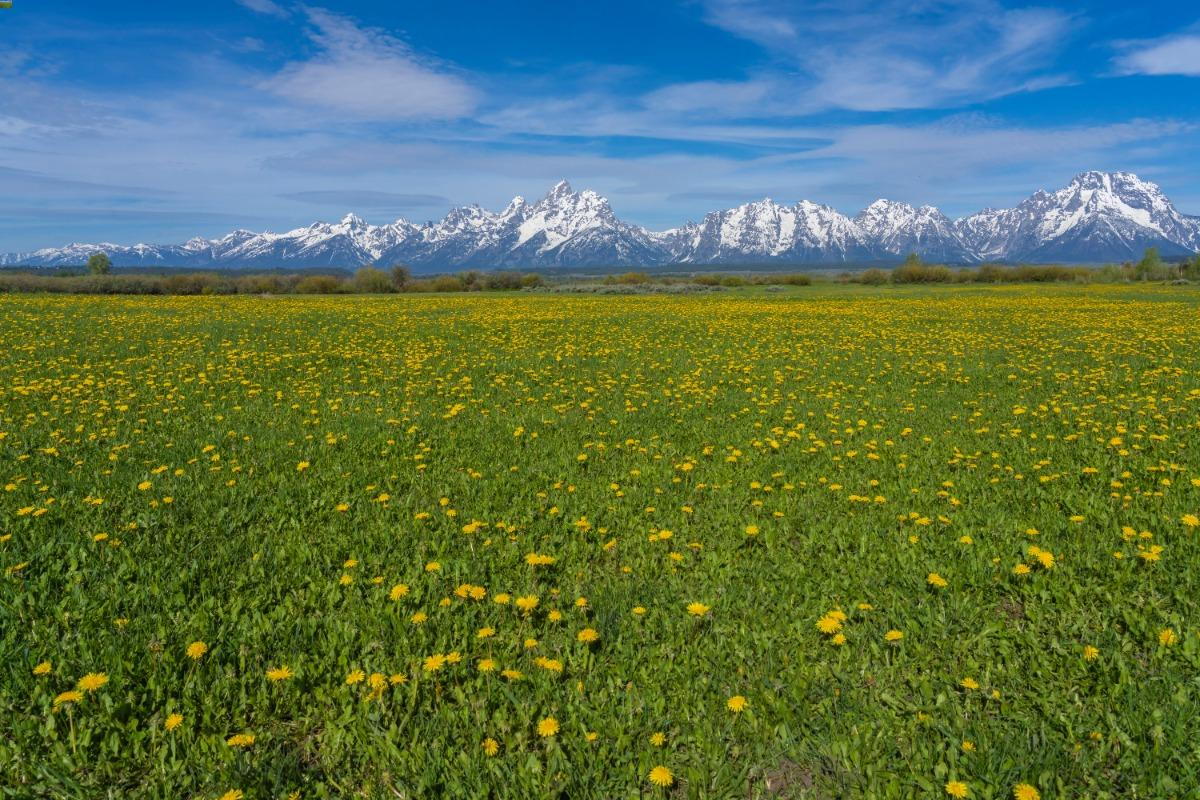Plant-Life Of Grand Teton National Park

- posted: May 25, 2023
The plant life in Grand Teton National Park is diverse and varied, showcasing a range of ecosystems and vegetation types. The park's unique geography, elevation variations, and climatic conditions contribute to this rich plant diversity.
Within the park, you can find expansive forests dominated by coniferous trees such as lodgepole pine, Engelmann spruce, subalpine fir, and Douglas fir. These forests cover lower elevations and provide habitat for numerous wildlife species.
As you ascend in elevation, you'll encounter subalpine meadows and alpine tundra. Subalpine meadows are characterized by lush grasses, wildflowers, and sedges. These meadows burst into vibrant colors during the summer months as numerous wildflowers bloom, including lupine, aster, Indian paintbrush, and columbine.
Above the subalpine meadows, the alpine tundra zone takes over, characterized by harsh weather conditions and low-lying vegetation adapted to survive in this challenging environment. Here, you'll find hardy plants such as mosses, lichens, alpine grasses, and small flowering plants that are able to thrive in rocky, wind-swept conditions.
Wetland areas and riparian zones in the park are vital for both plant and animal life. These areas support a variety of aquatic and marsh plants, including sedges, rushes, willows, and water-loving wildflowers.
Grand Teton National Park is also home to unique plant species that are well-adapted to the local conditions. For example, the whitebark pine, a keystone species, is known for its ability to grow at high elevations and its importance in providing food for animals like grizzly bears and Clark's nutcrackers.
Preserving the delicate balance of the park's plant communities is crucial for maintaining the overall health of the ecosystem and ensuring the continued survival of the diverse plant species found within Grand Teton National Park.

- posted: May 25, 2023
The plant life in Grand Teton National Park is diverse and varied, showcasing a range of ecosystems and vegetation types. The park's unique geography, elevation variations, and climatic conditions contribute to this rich plant diversity.
Within the park, you can find expansive forests dominated by coniferous trees such as lodgepole pine, Engelmann spruce, subalpine fir, and Douglas fir. These forests cover lower elevations and provide habitat for numerous wildlife species.
As you ascend in elevation, you'll encounter subalpine meadows and alpine tundra. Subalpine meadows are characterized by lush grasses, wildflowers, and sedges. These meadows burst into vibrant colors during the summer months as numerous wildflowers bloom, including lupine, aster, Indian paintbrush, and columbine.
Above the subalpine meadows, the alpine tundra zone takes over, characterized by harsh weather conditions and low-lying vegetation adapted to survive in this challenging environment. Here, you'll find hardy plants such as mosses, lichens, alpine grasses, and small flowering plants that are able to thrive in rocky, wind-swept conditions.
Wetland areas and riparian zones in the park are vital for both plant and animal life. These areas support a variety of aquatic and marsh plants, including sedges, rushes, willows, and water-loving wildflowers.
Grand Teton National Park is also home to unique plant species that are well-adapted to the local conditions. For example, the whitebark pine, a keystone species, is known for its ability to grow at high elevations and its importance in providing food for animals like grizzly bears and Clark's nutcrackers.
Preserving the delicate balance of the park's plant communities is crucial for maintaining the overall health of the ecosystem and ensuring the continued survival of the diverse plant species found within Grand Teton National Park.
Visit our Office
1115 Maple Way
Jackson, WY 83001